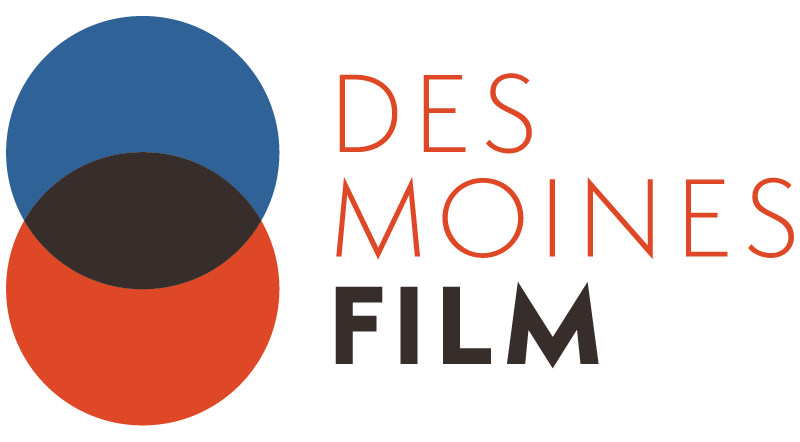
50 Years Later: Three Films from 1969 that Changed America
From the Apollo 11 moon landing to the birth of the gay liberation movement, 1969 was a year that brought historic change to America.
The cinema, it turned out, was no different.
Merely a year after the new Motion Picture Association of America (MPAA) rating system marked the official death knell for Hays Code-era censorship, American moviegoers were more eager than ever to explore radical, new stories at the theater in 1969.
From Sam Peckinpah’s ultra-bloody western “The Wild Bunch” to Costa-Gavras’ searing political thriller “Z,” the films of 1969 brought revisionism and cynicism to the fore of the cinematic landscape, rather than the escapism that had so often defined classic Hollywood.
And yet, one needs only to glance at some of the most popular films of 1969 to see that a new kind of escapist fantasy had sprouted out of this otherwise dark streak of mistrust and alienation: the buddy film.
Initially reserved for comedy teams like Laurel and Hardy, the buddy film had previously been characterized by a pairing of two people (oftentimes men) for comedic effect. However, this subgenre was repurposed in the late 1960s to depict male relationships in new ways — ways that addressed the fragility of masculinity and, in some cases, even the latent homosexuality that bubbled beneath the surface of these relationships.
1969 saw the release of three movies in particular that forever shifted the paradigm of on-screen male relationships: “Butch Cassidy and the Sundance Kid,” “Easy Rider” and “Midnight Cowboy.” Let’s now take a look at how each one of these films broke cinematic and storytelling ground 50 years ago.
‘Butch Cassidy and the Sundance Kid’
This much-beloved western by director George Roy Hill is well known for its Burt Bacharach score, eminently quotable screenplay (“This is no time for bravery!”) and gorgeous landscape cinematography. However, it’s the friendship between Butch (Paul Newman) and the Sundance Kid (Robert Redford) that makes this film a classic in every sense of the word.
Based loosely on the historical figures of the same names, “Butch Cassidy and the Sundance Kid” follows two infamous train robbers as they outrun a posse, ride bicycles, jump off cliffs and even schedule an impromptu trip to Bolivia. Through it all, Butch and Sundance remain defiantly nonchalant, cracking jokes between shoot outs with a kind of post-modern self-awareness that was relatively unheard of in the western genre at the time.
Newman and Redford have never been more likeable than in this movie (their other most notable pairing in 1973’s “The Sting” does come close, though). In fact, it could be argued that their on-screen friendship in this film set the gold standard for all buddy pairings that followed. The key, perhaps, is that not only do Butch and Sundance possess comedic chemistry; they also display a real sense of teamwork and trust.
Butch and Sundance trust that they will watch out for one another, that they will have each other’s back. Not once in the film do they allow each other to feel truly threatened or fearful, often using humor to disarm any dangerous — and even deadly — situation in which they might find themselves.
Likewise, romantic conflict fails to present any real threat to the eponymous duo’s bond, as their (platonic) love for each other appears to outweigh any heterosexual relationship they could possibly pursue. To be sure, the inclusion of Sundance’s lover Etta Place (Katharine Ross) brings about no discernible hint of jealousy between the two men — even as Butch takes Etta on a romantic bike ride to the tune of Bacharach’s “Raindrops Keep Fallin’ on My Head.”
A male friendship built on teamwork, trust and — dare we say — love? Count us in.
‘Easy Rider’
Not so much a film as it is a generational outcry, “Easy Rider” all but ushered in the New Hollywood era of filmmaking. Its experimental editing, sparse dialogue and frank depiction of sex, drugs and fringe philosophy helped map out a cinematic terrain that fell more in line with the French New Wave than with the Hollywood gatekeepers of old.
Helmed by first-time director Dennis Hopper, “Easy Rider” centers on the cross-country odyssey of bikers Wyatt (Peter Fonda) and Billy (Hopper). But this is not a traditional road movie. The two bikers’ ultimate goal (and destination) is, at best, hazily defined.
Their mutual bond, however, is not.
Indeed, the male friendship at the heart of “Easy Rider” marked a poignant shift in how men were generally presented on screen. Notwithstanding the long hair and drug use, Wyatt and Billy looked and acted like entirely nontraditional male heroes.
Romantic pursuits, for one, appear to be of little interest to the pair (beyond purely carnal desires). In fact, Wyatt and Billy often seem to be most comfortable when they are simply enjoying each other’s company (the film’s nightmarish cemetery acid trip takes place, perhaps not so coincidentally, during a fling with two female prostitutes).
Acts of violence and aggression prove to be similarly unappealing to Wyatt and Billy, as they refuse to retaliate to the many homophobic barbs thrown their way by a slew of southern yokels. The film’s explosive ending makes it rather apparent, however, whether or not this pacifist approach was the smartest route for the two bikers to take.
All cultural and sociopolitical implications aside, “Easy Rider” is, at its core, about two men exploring new ways to express themselves, even as those acts of expression run counter to America’s dominant notion of masculinity. In this way, Wyatt and Billy were “born to be wild,” yes, but it seems they were also born to be together — in life and in death.
‘Midnight Cowboy’
You know how often the Oscars gets it wrong when it comes to the Best Picture race? (*cough* “Green Book” *cough*)
Well, in 1969, that wasn’t the case, as the Academy made the right move by rewarding not only the best film of the year, but also one of the most daring and thought-provoking stories the cinema had yet seen.
That film is “Midnight Cowboy,” director John Schlesinger’s melancholic masterpiece of urban decay and alienation.
As is the case with our two aforementioned films, “Midnight Cowboy” focuses on male companionship, albeit from a much more intimate (and even sexually charged) frame of reference. The film, set in an incredibly grimy New York City, follows new-to-town Joe Buck (Jon Voight), an aspiring male prostitute who finds an unlikely manager and friend in sickly scam artist Enrico Salvatore Rizzo (Dustin Hoffman).
Despite carrying himself with a false confidence of pre-measured swagger and sex appeal, Joe proves to be a failure of a hustler (his only seemingly successful conquest early in the film turns out to be an utter disaster, as his sleeping partner ends up soliciting Joe for his own money).
All the while, Joe is haunted by flashbacks of an inferred childhood trauma and possible sexual abuse, which adds an uncomfortable (but all too necessary) shade of context to his desired line of work. Meanwhile, Enrico (better known by his very apt nickname “Ratso”) allows his mind to flash ahead to beach bum fantasies in an idyllic (and, let’s face it, non-existent) vision of Florida.
Although their coping mechanisms veer in opposite directions (one, the past; the other, the future), Joe and Ratso find themselves in remarkably similar situations. Scarred by trauma and helplessly alone, the two misfits do whatever they can to avoid the present.
However, it’s only in the present that they find that they are not really alone — at least, not for the moment. After all, they have each other.
By the film’s heartrending climax, it becomes clear that Joe and Ratso have formed an indelible bond, one built out of love as much out of sheer desperation. Whether that love is entirely platonic is up for debate, but one thing is certain: the friendship at the heart of “Midnight Cowboy” is truly one for the ages.
— Clinton Olsasky

